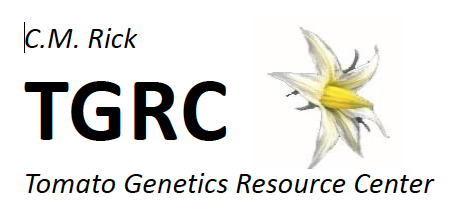Bleach Treatment
Seed of cultivated tomato and related Solanum species often germinate more readily after treatment with bleach. Moreover, in our experience, seed of several species, notably S. cheesmaniae, S. galapagense, S. ochranthum, S. juglandifolium, S. lycopersicoides and S. sitiens, will not germinate at appreciable rates without bleach treatment. Other stocks often benefit from bleaching, including weak or slow mutants, aneuploids and polyploids, or old seed samples stored under suboptimal conditions. Seed bleaching also helps prevent pathogen transmission.
Our routine practice is to soak seeds in half-strength household bleach (final concentration ~2.7% sodium hypochlorite) for 30 mins. Seeds of S. cheesmaniae, S. galapagense, S. ochranthum, S. juglandifolium, S. lycopersicoides and S. sitiens can be treated for 60 mins (or 30 mins. at full strength). After bleaching, seeds should be rinsed for several minutes in running water, then sown directly, either on germination media (below) or in soil.
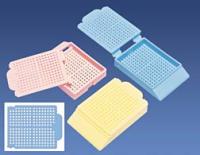
A fine mesh strainer works well for rinsing large seeds. For species with very small seeds, such as S. pennellii, S. cheesmaniae and S. galapagense, seeds can be wrapped in fine cheesecloth. Tissue sample cassettes are convenient for bleaching and rinsing large numbers of seed samples. A drop of detergent in the bleach solution will help break surface tension so the solution can penetrate the cassettes.
Germination Media
After rinsing, bleached seeds should be plated on tissue culture medium composed of 0.5X MS salts, with vitamins, no sucrose, and 2.2g/L phytagel. The media can be poured into sterile petri plates (100 x 20mm) or plastic sandwich boxes (4-5/16" x 4-5/16" x 1-3/8" clear plastic boxes, www.hoffmanmfg.com). The sandwich boxes provide more room for hypocotyl elongation, and are more convenient for scoring germination percentage. The boxes can be surface sterilized by soaking in a dilute bleach solution, then rinsing with 70% ethanol. Seed do not need to be plated under sterile conditions. Seed should be germinated in a growth chamber or incubator at ca. 25C with supplemental lighting to support early seedling growth. After germination, seedlings are transplanted to soil.
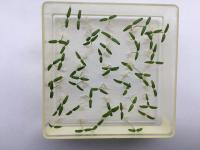
We find that seeds of many Solanum species germinate more rapidly and uniformly on 1/2 MS than on other media. Another advantage is that seedlings are easily removed without damaging their roots, which increases survival rate after transplanting. Also, seedlings can grow for weeks on the nutrient medium before being transplanted, if needed.
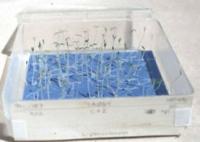
Alternatively, seeds can be sown on moistened germination paper cut to fit the germination boxes. We use Steel Blue Blotter paper.
Nicking or Removing Seed Coat
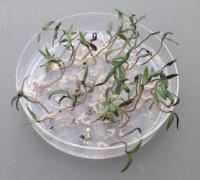
It is sometimes beneficial to nick or remove the seed coat to facilitate radicle emergence. Though not practical for large numbers of samples, it may be worthwhile for very weak or old seed and/or when seed quantities are extremely limited. Nicking is done by cutting through the seed coat near the radicle end using a scalpel. Alternatively, the seed coat can be entirely removed and the ovules plated directly on 0.5X MS. This works well for species with thick seed coats, such as S. sitiens, S. lycopersicoides, S. juglandifolium and S. ochranthum.
References:
Rick, C.M., and R. I. Bowman (1961) Galápagos tomatoes and tortoises. Evolution 15: 407-417
Rick, C.M., and D. Hunt (1961) Improved seed germination with the use of sodium hypochlorite. Report of the Tomato Genetics Cooperative 11: 22.
Rick, C.M., and F.H. Borgnino (1977) A method for improving germination of Solanaceous species. Solanaceae Newsletter 4: 7-8.
